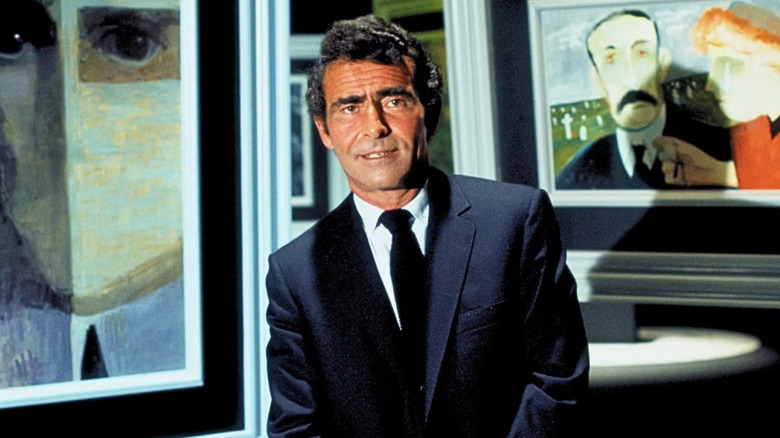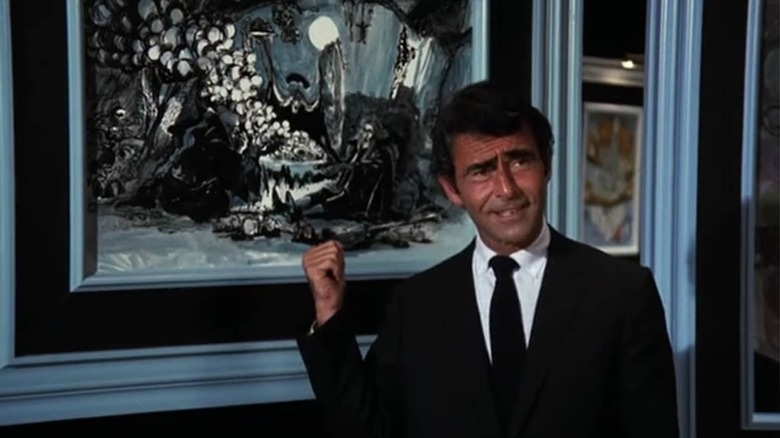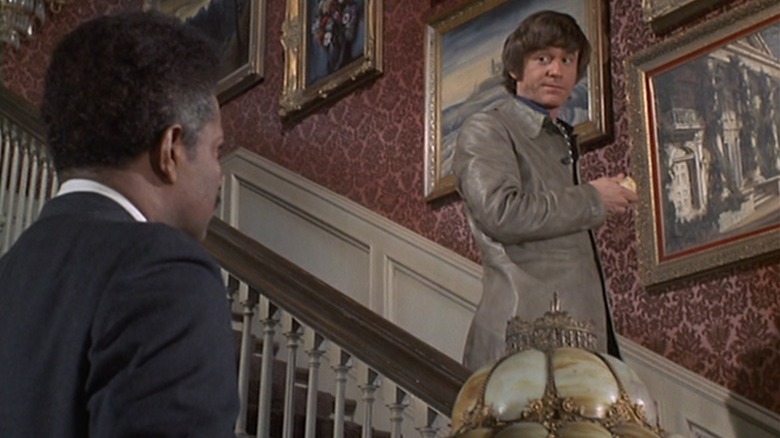We might obtain a fee on purchases constructed from hyperlinks.
To at the present time, Rod Serling’s sci-fi anthology sequence “The Twilight Zone” often tops lists of the very best TV reveals of all time. Serling, and a workforce of among the finest sci-fi authors of the Nineteen Fifties and Sixties, conceived of 156 miniature morality tales, normally with a supernatural bent, and in so doing modified the very face of tv. Sci-fi and horror had been thought-about extra commercially viable, inspiring a brand new slew of imitators and a shift within the public’s consideration. Serling additionally launched a novel type of storytelling effectivity with “The Twilight Zone,” proving that a complete, closed morality fable might be wrapped up in a mere 25 minutes (or 51 minutes within the present’s fourth season). Serling was additionally cautious to explicitly state an ethical in each episode, making “The Twilight Zone” a implausible social commentary.
“The Twilight Zone” ran from 1959 to 1964, working 156 episodes over 5 seasons. The sequence entered syndication, and generations of children had been in a position to re-watch older episodes properly into the Nineteen Nineties. Sure TV stations round the USA even hosted annual “Twilight Zone” marathons on Thanksgiving Day, making Serling’s sequence an establishment. To at the present time, younger individuals can communicate of a creature on the wing of a airplane or the truth that “To Serve Man” is a cookbook.
After “The Twilight Zone,” Serling stumbled to make one other hit. He created a short-lived Western known as “The Loner” in 1965, however it solely lasted one season. In 1969, Serling wrote a global riff on “A Christmas Carol” known as “A Carol for One other Christmas” starring Peter Sellers. That very same yr, Serling hosted the sport present “Liar’s Membership,” which he left after 21 episodes.
Serling’s grand return to anthology horror is well-remembered by followers however skilled a notoriously troubled manufacturing. Many followers of traditional TV will have the ability to let you know all about “Night time Gallery,” which debuted in 1969.
‘Night time Gallery’ was the extra horror-forward model of ‘The Twilight Zone’
“Night time Gallery” was an anthology sequence with a curious bookend. At the start of each episode, Serling would seem in an enormous, wall-less artwork gallery stocked with eerie, macabre work. Serling would wander across the museum, seemingly after it had closed, guiding the viewer towards varied items on show. He would then say that every portray was impressed by the macabre story he was about to spin. The work had been supplied by artists Thomas J. Wright and Jerry Gebr.
“Night time Gallery” could be thought-about a non secular sequel to “The Twilight Zone,” boasting an identical tone and telling equally twisty tales. “Night time Gallery” stood aside due to its concentrate on supernatural evil, and for its wonderful colour images. Like “The Twilight Zone,” “Night time Gallery” culled sci-fi magazines and literary anthologies to search out tales to adapt, and the sequence boasted TV variations of tales by Richard Matheson, H.P. Lovecraft (together with “Cool Air” and “Pickman’s Mannequin”), and plenty of others. NBC needed a intentionally ugly sequence, and Serling was completely satisfied to oblige, as long as he may proceed along with his custom of writing morals and social commentary into his episodes.
Additionally like “The Twilight Zone,” “Night time Gallery” boasted a formidable raft of expertise. The sequence supplied just a few early directing gigs for a younger Steven Spielberg, and actor John Astin helmed a narrative, as did Leonard Nimoy. Jeannot Swarc directed many episodes, as did future “Saturday Night time Fever” director John Badham. Serling penned the majority of the “Night time Gallery” episodes. Visitor stars included Vincent Worth, Burgess Meredith, Stuart Whitman, Cameron Mitchell, Leslie Nielsen, John Saxon, Joan Crawford (in her last appearing position), Orson Welles, Phyllis Diller, and dozens of others.
Rod Serling typically butted heads along with his producer, Jack Laird
“Night time Gallery” was initially introduced as a Wheel Present, that’s: one in all a number of reveals that will rotate via the identical weekly timeslot. The present shared its house with “McCloud,” “The Psychiatrist,” and “San Francisco Worldwide Airport,” with all 4 reveals bundled as “4 in One.” Due to this, the primary season of “Night time Gallery” solely featured six episodes.
Beginning in its second season, nonetheless, hassle began. The present’s producer, Jack Laird, rejected a number of Serling’s scripts and began insisting on inserting his personal comedic interstitials in between the macabre tales. Serling loathed the so-called “blackout sketches,” saying within the biography “Rod Serling: His Life, Work, and Creativeness,” that “I assumed they distorted the thread of what we had been attempting to do on ‘Night time Gallery.’ I do not suppose one can present Edgar Allan Poe after which come again with Flip Wilson for 34 seconds. I simply do not suppose they match.” Flip Wilson, after all, was a well-known comic common within the early Nineteen Seventies.
Throughout the present’s second season, Serling give up as govt producer to concentrate on writing full-time. This, sadly, gave him much less artistic management, and “Night time Gallery” began to deteriorate in high quality. By the third season, the sequence was decreased to a 30-minute format, and Laird started insisting on fewer morality tales as they appeared on “The Twilight Zone.” There was additionally a mandate to adapt fewer European quick tales and extra American ones. The sequence was canceled after its third season, having run for 43 episodes.
“Night time Gallery” wasn’t forgotten, nonetheless. Certainly, it was common sufficient to be parodied in “The Simpsons” fourth Halloween Particular. Spielberg additionally did not overlook his roots and reused the title as “Night time Ghoulery” for the “Tiny Toon Adventures” Halloween Particular he produced. “Night time Gallery” does not have the identical cultural traction as “The Twilight Zone,” however a search via the episodes will discover just a few tales which are simply pretty much as good, if not higher. The sequence could be bought on Prime Video.





Comments are closed.